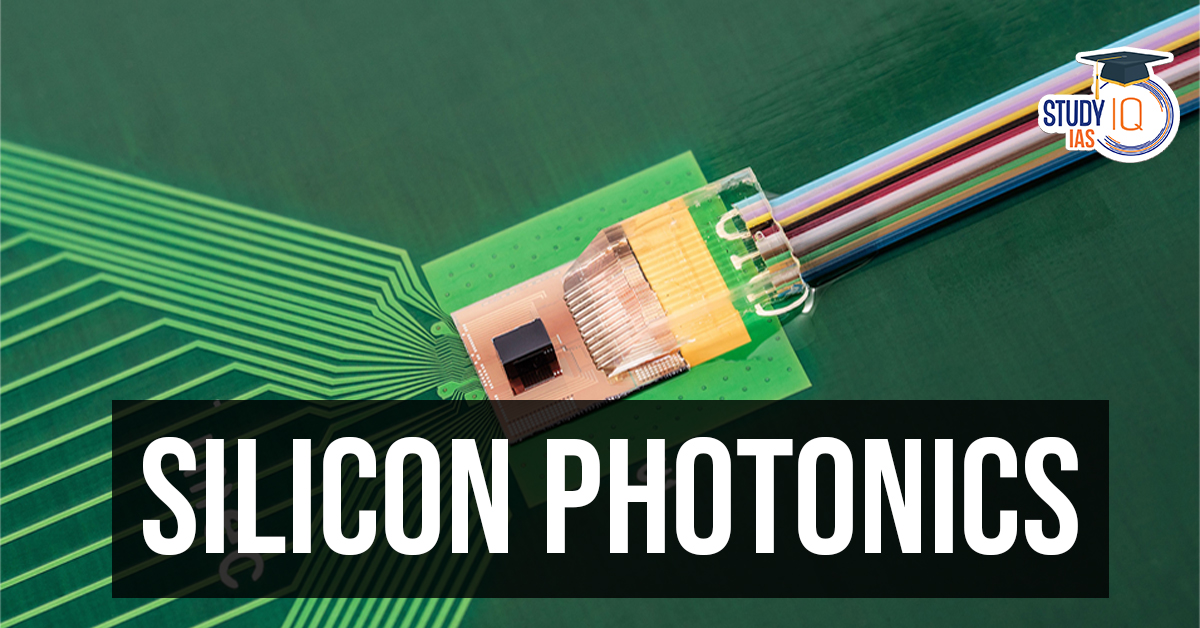Table of Contents
Context: Recently, scientists have created the first miniaturised laser directly on a silicon chip, marking a significant breakthrough in silicon photonics.
What is Silicon Photonics?
- Silicon photonics is a technology that uses light (photons) instead of electricity (electrons) to carry and process information on silicon-based microchips.
- It combines optical components with traditional silicon electronics, allowing faster and more energy-efficient communication between and within chips.
Advantages of Photons over Electrons
- Photons move faster and can carry much more data at once (high bandwidth).
- They generate less heat and lose less energy during transmission.
- This makes photonic chips ideal for high-speed data transmission, especially over short distances like between servers or chips.
Challenge in using Photons
- A key challenge was integrating a light source (laser) directly into the silicon chip, as silicon does not naturally emit light.
- Silicon has an indirect bandgap, meaning electrons in silicon need assistance (like vibration energy) to drop energy levels and emit light.
- The ideal solution is to build the laser directly on the silicon chip, but this is difficult because:
- Materials like gallium arsenide and silicon have different crystal structures
- This causes defects when one is grown on the other, reducing efficiency.
- Recently, researchers solved this integration problem:
- They used nanometre-wide trenches in a 300 mm silicon wafer & grew gallium arsenide at the bottom of these trenches, trapping defects there.
- This allowed high-quality laser material to grow on top.
- Direct integration reduces costs, making the technology scalable for mass production.


 AI and its Regulation in India, Limitati...
AI and its Regulation in India, Limitati...
 Tuberculosis (TB), Symptoms, Causes and ...
Tuberculosis (TB), Symptoms, Causes and ...
 Genome India Project (GIP), Aim and Sign...
Genome India Project (GIP), Aim and Sign...





















